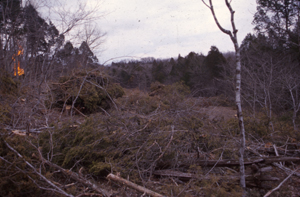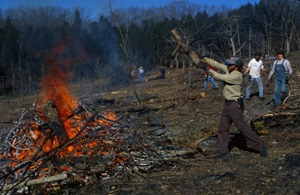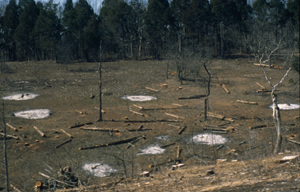200 years ago, glades comprised perhaps 5% of SNR's 2400 acres. These were located in very rocky areas among the open, dry woodlands of the upper, south-facing slopes. Since European settlement, this proportion gradually became reduced to less than 1%, until glade restoration efforts began in 1991. Decades of suppression of wildfire or prescribed burning permitted encroachment by trees into these formerly treeless, rocky grasslands, so cutting and removal of the primary invader, the Eastern red cedar Juniperus virginianus, was the first tactic used. Once the cut cedars are cleared off, prescribed burning and sowing of locally collected seeds of glade species in bare areas advances the restoration process. In recent years, many of the reopened glades have sprouted up in shrubs that used to grow spindly and starved for light beneath the cedars, but now have abundant light and full access to rainfall and nutrients from slowly decomposing roots and humus created by the cedars. Prescribed fire top-kills these shrubs, but permanent removal requires the judicious use of herbicides by cut-stump or basal stem treatments, which minimize herbicide used and effects on non-target plants.
|

 
|